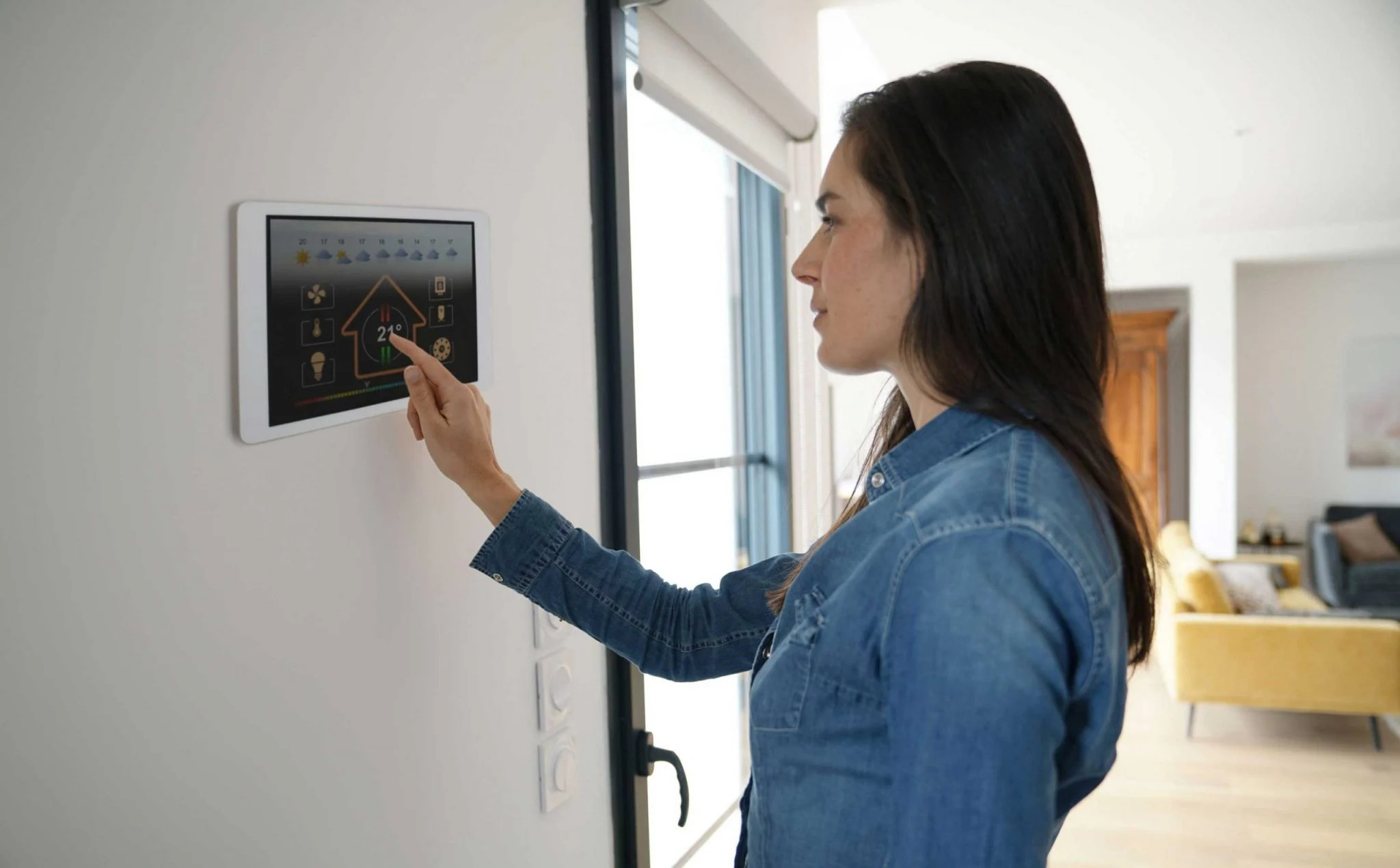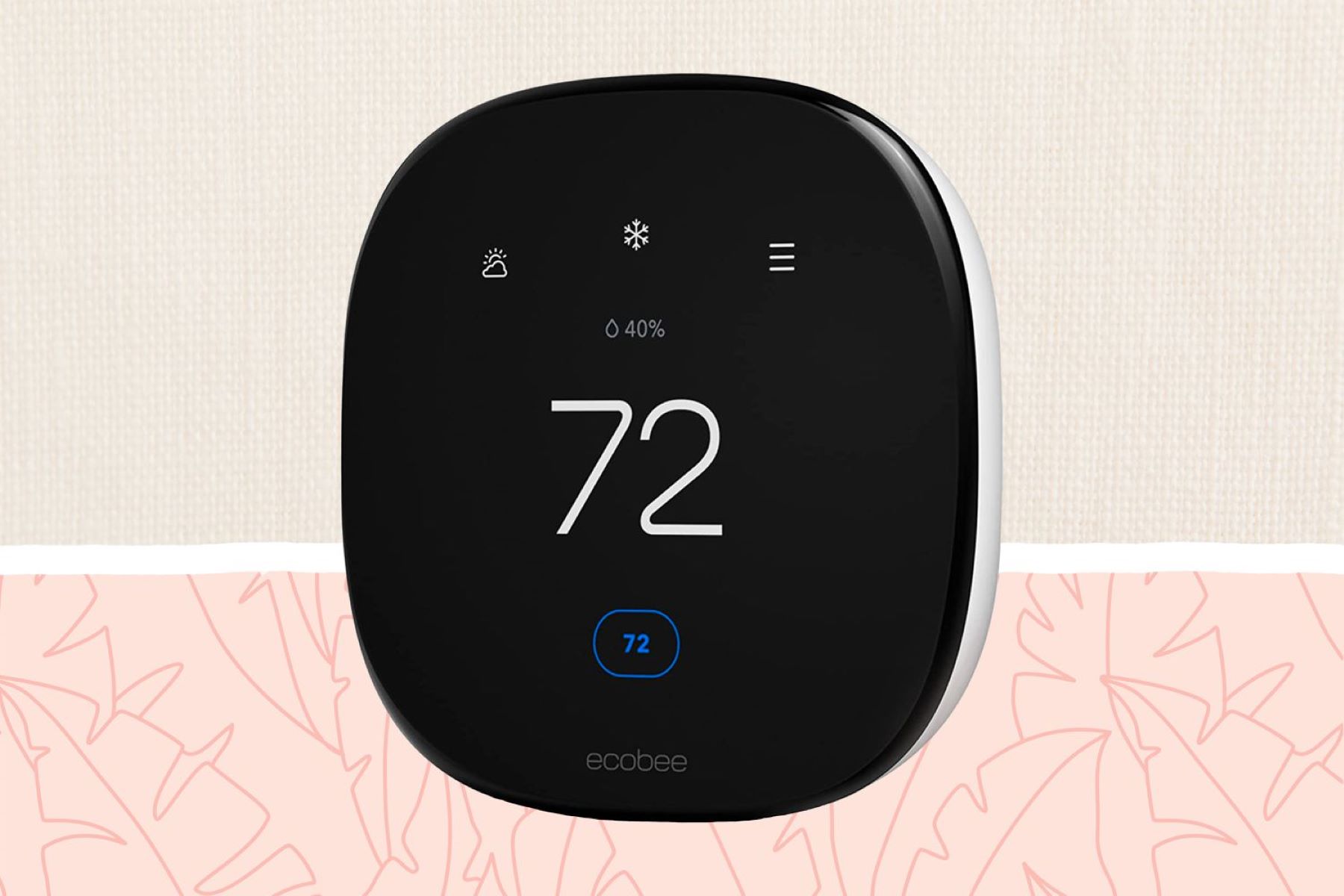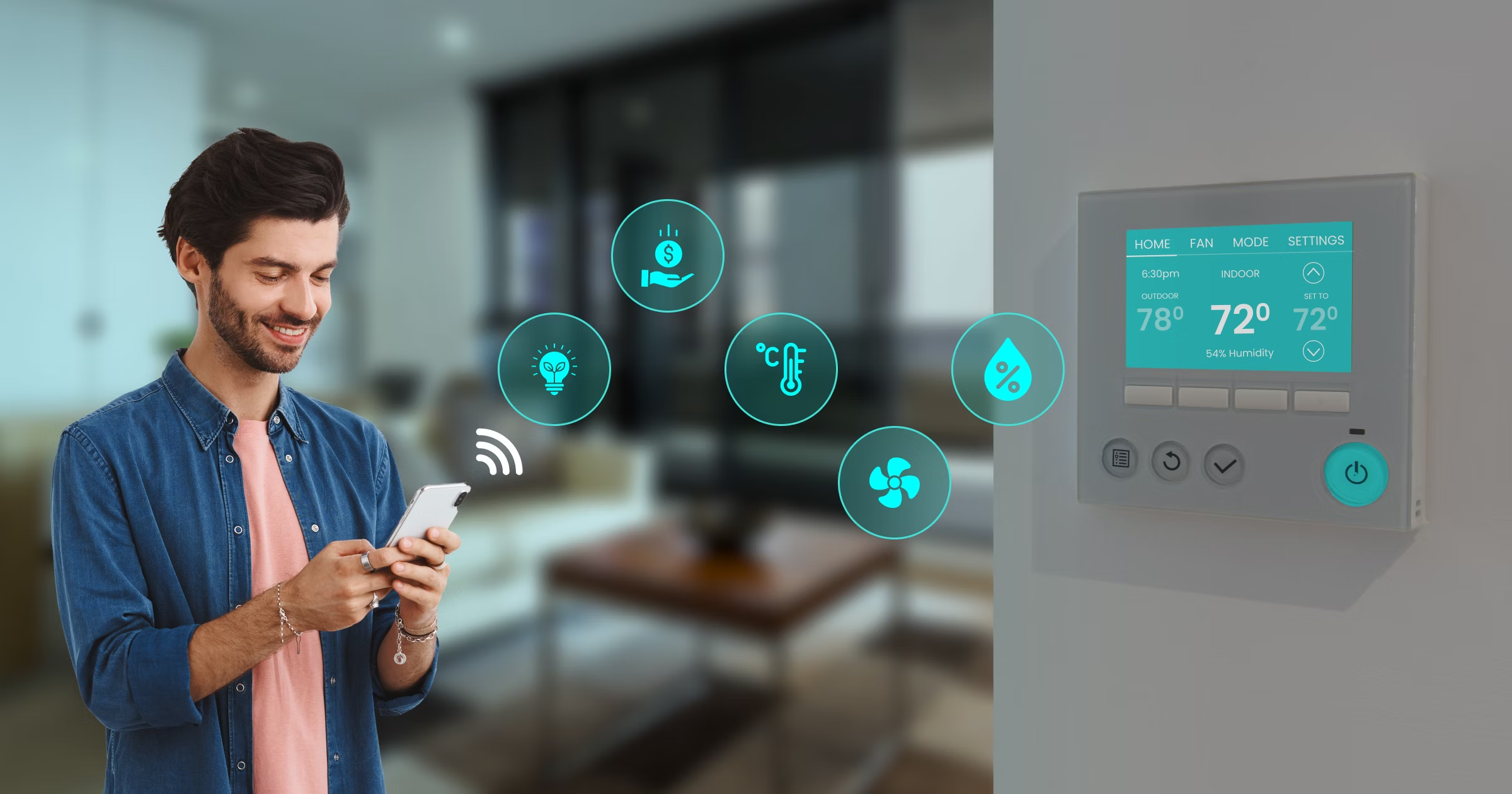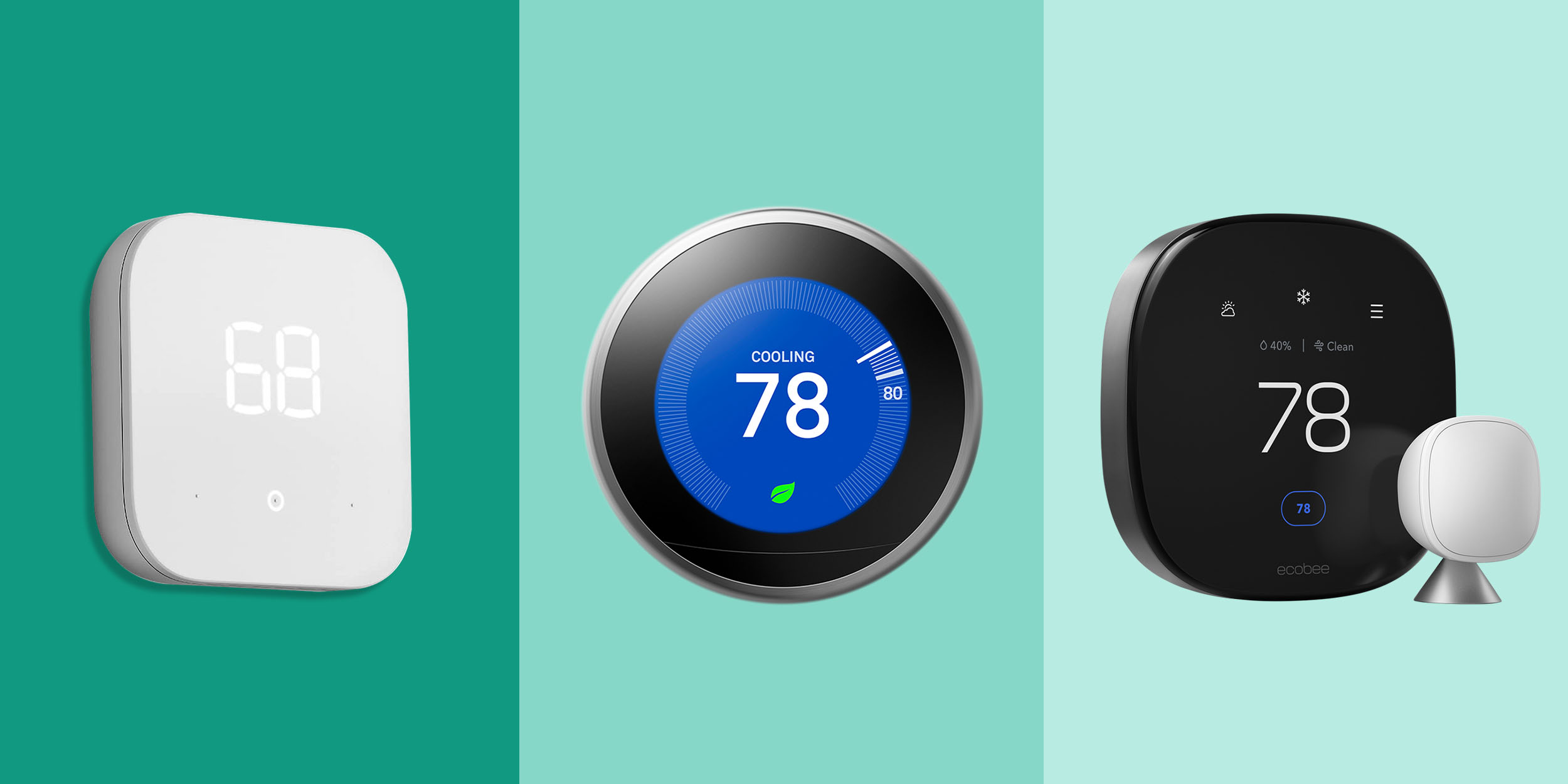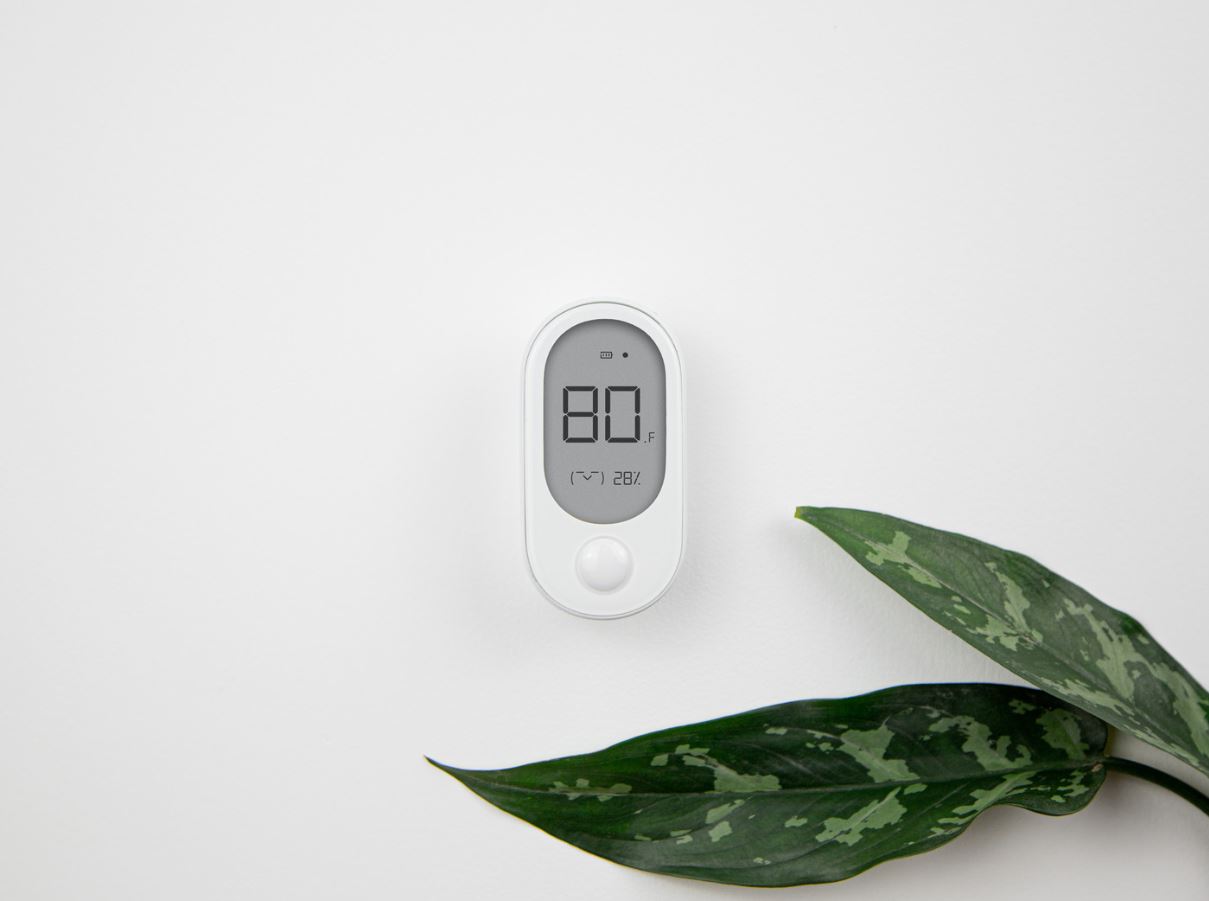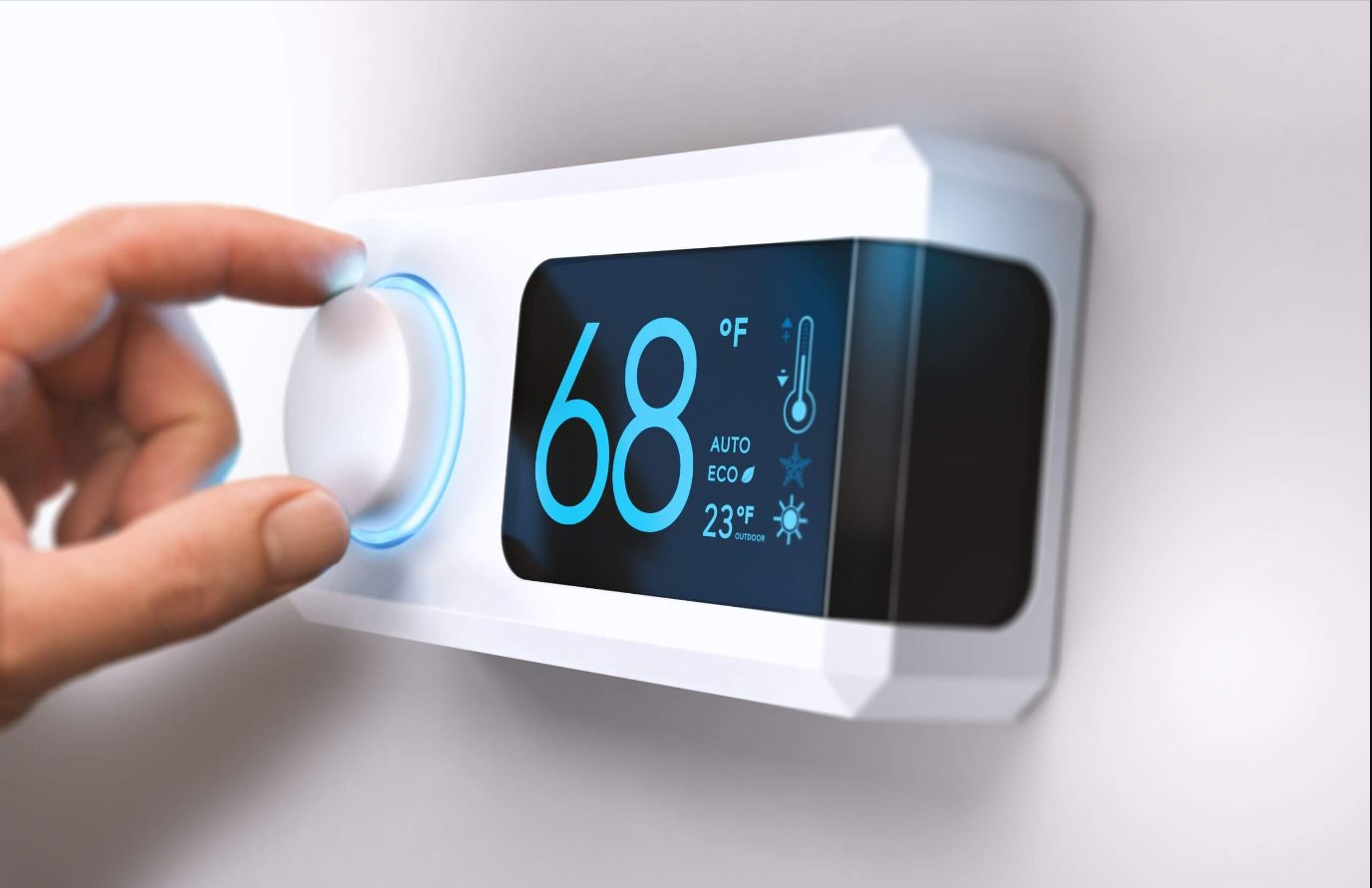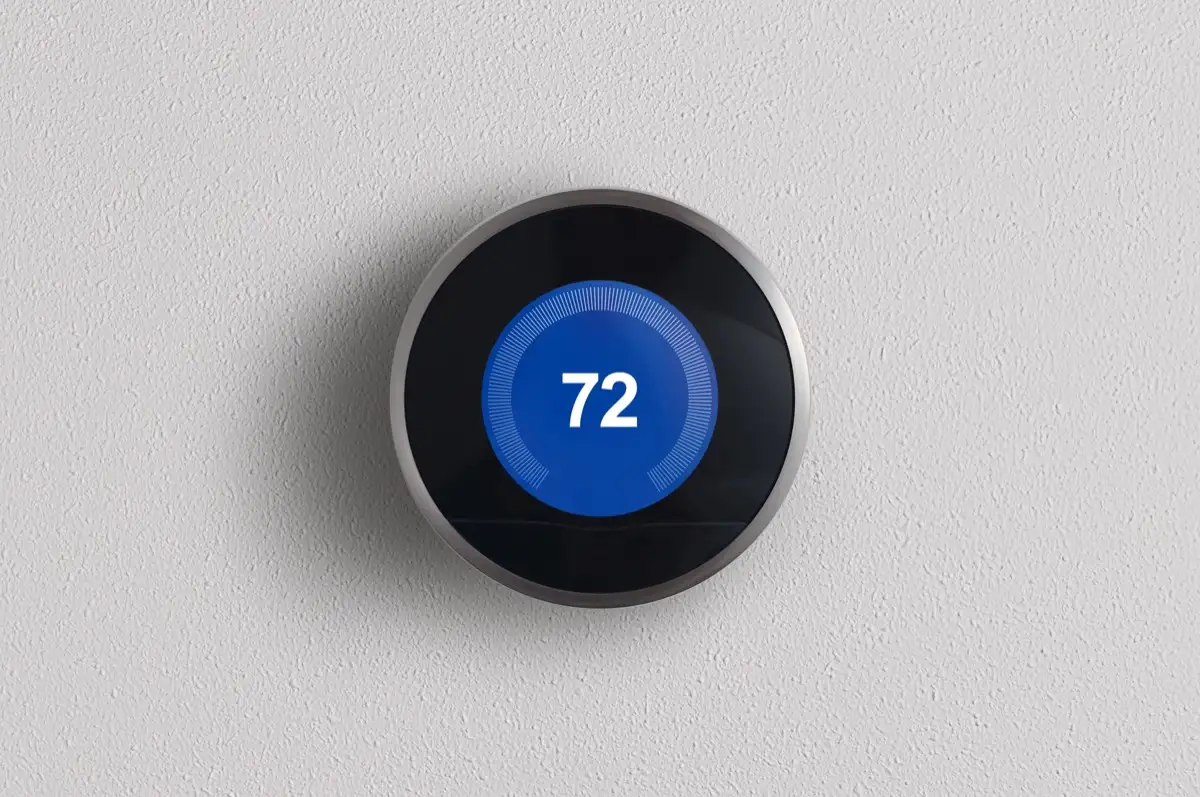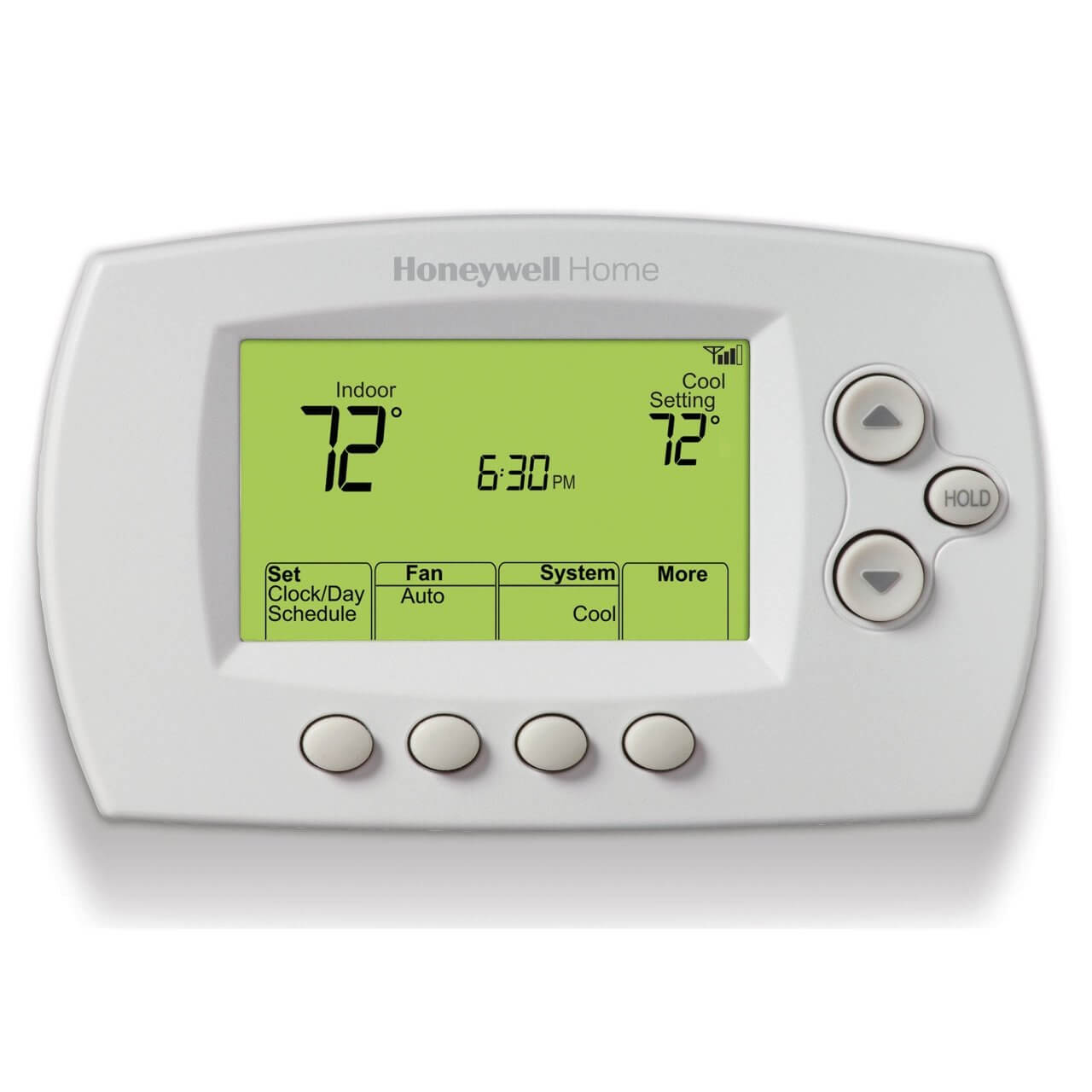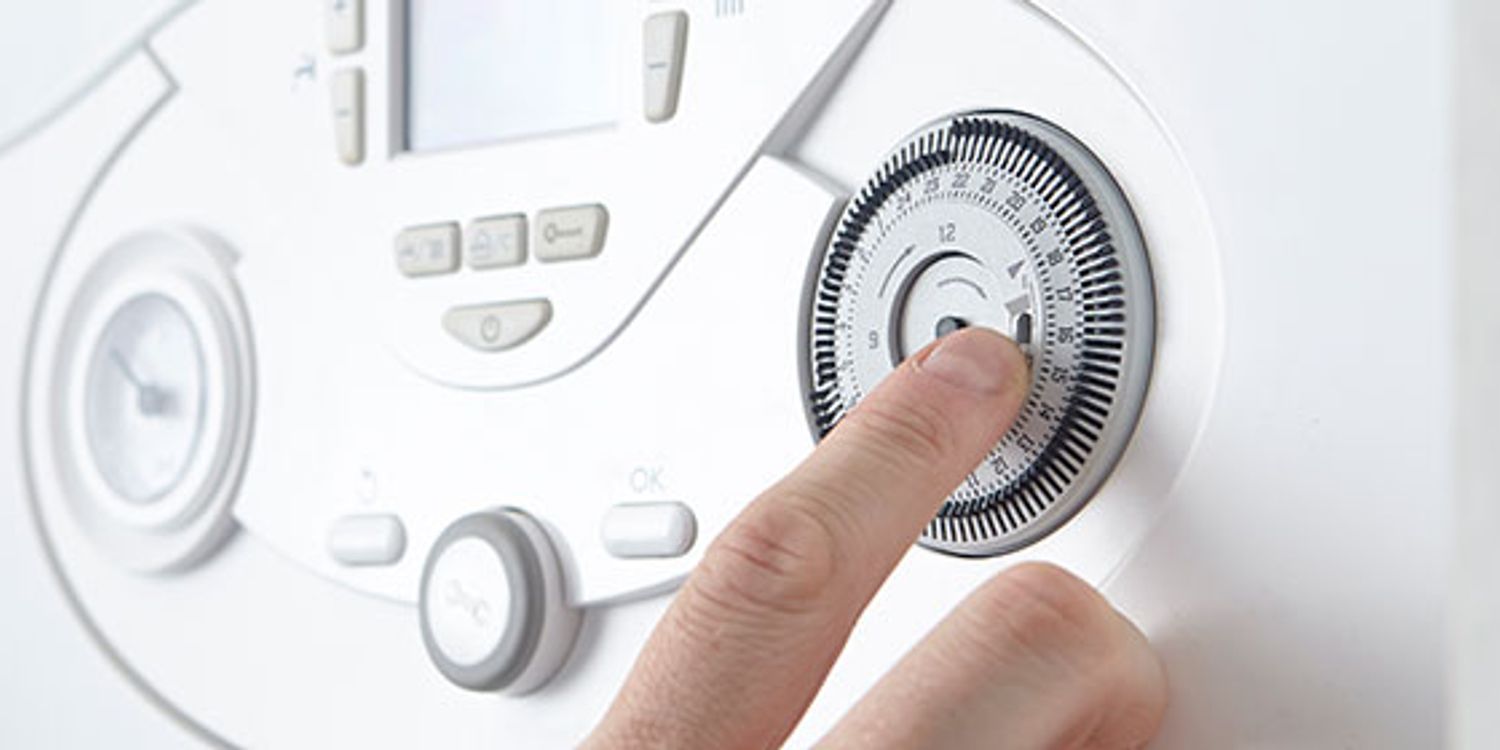Introduction
Wireless thermostats have revolutionized the way we control the temperature in our homes. Gone are the days of manually adjusting the thermostat or dealing with complicated wired systems. With the advent of wireless technology, homeowners can now enjoy the convenience, flexibility, and energy efficiency offered by wireless thermostats.
A wireless thermostat is a device that allows you to control and regulate the heating and cooling system in your home remotely. It uses wireless communication to connect to the heating, ventilation, and air conditioning (HVAC) system, providing you with the ability to adjust the temperature, set schedules, and monitor energy usage from anywhere in your home or even when you’re away.
Wireless thermostats offer numerous benefits over traditional wired thermostats. They provide greater flexibility, allowing you to control the temperature of individual rooms or zones in your home. This can help maximize comfort and energy savings by heating or cooling only the rooms that are being used. Additionally, wireless thermostats often come equipped with advanced features such as learning algorithms, motion sensors, and Wi-Fi connectivity, further enhancing their functionality and convenience.
So, how exactly do wireless thermostats work? In a nutshell, they rely on a combination of sensors, wireless communication protocols, and a control unit. The sensors detect the current temperature and other environmental factors, while the wireless communication protocols transmit the data to the control unit. The control unit processes the information and sends commands to the HVAC system to adjust the temperature as per your preferences.
Installation and setup of a wireless thermostat are relatively straightforward. In most cases, it involves replacing your existing thermostat with the wireless version and connecting it to the HVAC system. Many wireless thermostats also offer intuitive setup instructions and user-friendly interfaces, making it easy for homeowners to configure their desired settings.
In the following sections, we will delve deeper into how wireless thermostats work, discuss their components, explore the common features they offer, consider the advantages and disadvantages, and provide tips on choosing the right wireless thermostat for your home. So, let’s dive in and uncover the world of wireless thermostats!
What is a Wireless Thermostat?
A wireless thermostat is a modern, smart device that allows you to control and manage the temperature of your home remotely. Unlike traditional thermostats that are connected to the HVAC system through wires, wireless thermostats communicate wirelessly using radio frequencies or Wi-Fi. This wireless connection enables you to adjust the temperature, set schedules, and monitor energy usage from anywhere within your home or even when you’re away.
Wireless thermostats offer a wide range of advanced features and functionalities that make them highly convenient and user-friendly. One of the key advantages of wireless thermostats is their ability to provide zone control. This means that you can set different temperatures for different areas of your home, ensuring optimal comfort and energy efficiency. For example, you can keep your living room comfortably warm while keeping your bedroom cooler during nighttime.
Furthermore, wireless thermostats often come equipped with learning algorithms that adapt to your behavior and preferences. They can learn your daily routine and automatically adjust the temperature according to your schedule. For instance, if you typically leave your home at 9 AM, the wireless thermostat can reduce the temperature to save energy and then raise it back up before you return, so you step into a cozy environment.
Another significant feature of wireless thermostats is their ability to connect to your home’s Wi-Fi network. This enables you to control the thermostat remotely through a smartphone app or a web-based interface. Whether you’re lying in bed or on vacation, you can easily adjust the temperature, check energy usage, and monitor your HVAC system’s performance with just a few taps on your phone or clicks on your computer.
Wireless thermostats also often provide real-time energy usage data and reports, allowing you to track and measure your home’s energy consumption. By analyzing this information, you can identify potential energy-saving opportunities and make adjustments to optimize your HVAC system’s efficiency. Some wireless thermostats even offer energy-saving tips and suggestions based on your usage history.
Overall, wireless thermostats offer a convenient and intuitive way to control and manage the temperature of your home. With their advanced features and remote access capabilities, they provide you with greater control, comfort, and energy efficiency. In the next section, we will take a closer look at how wireless thermostats work to deliver these benefits.
Benefits of Wireless Thermostats
Wireless thermostats offer numerous advantages over traditional wired thermostats. These benefits make them a popular choice among homeowners looking to enhance comfort, energy efficiency, and convenience in their homes. Below are some of the key benefits of using wireless thermostats:
- Flexibility and Zone Control: One of the main advantages of wireless thermostats is their ability to provide zone control. This means you can set different temperatures for individual rooms or areas of your home, allowing you to maximize comfort and energy savings. No more wasting energy heating or cooling empty rooms!
- Remote Access and Control: Wireless thermostats connect to your home’s Wi-Fi network, allowing you to control the temperature remotely. Whether you’re at work, on vacation, or simply lying in bed, you can easily adjust the settings using a smartphone app or a web-based interface. This level of convenience ensures that your home is always comfortable, no matter where you are.
- Energy Efficiency: With the ability to control and monitor your HVAC system remotely, wireless thermostats enable you to optimize energy usage. You can set schedules and adjust temperatures to conserve energy when you’re not at home and ensure comfort when you return. Some wireless thermostats even provide energy usage reports and tips to help you reduce energy consumption and save on utility bills.
- Smart Features and Learning Algorithms: Many wireless thermostats come equipped with smart features and learning algorithms that adapt to your behavior and preferences. They can learn your daily routine and automatically adjust the temperature accordingly. This intelligent functionality ensures that your home is always at the desired temperature without manual intervention.
- Integration with Smart Home Systems: Wireless thermostats can seamlessly integrate with other smart home devices and systems, establishing a comprehensive smart home ecosystem. This integration allows for greater automation and control over various home functions, such as controlling the lights, security systems, and even voice control through virtual assistants like Alexa or Google Home.
- Convenience and Ease of Use: Wireless thermostats are designed with user-friendly interfaces and intuitive setup processes, making them easy to install and operate. Many models offer touchscreens, clear displays, and simple programming options, ensuring a hassle-free user experience.
These benefits make wireless thermostats an attractive choice for homeowners who want to optimize comfort, save energy and have greater control over their home’s temperature. In the next section, we will delve into the working mechanism of wireless thermostats to understand how they deliver these advantages.
How Does a Wireless Thermostat Work?
Wireless thermostats operate based on a combination of sensors, wireless communication protocols, and a control unit. These components work together to ensure accurate temperature control and seamless communication with your HVAC system. Here’s a breakdown of how a wireless thermostat works:
Sensors: A wireless thermostat is equipped with sensors that detect the current temperature and other environmental factors in your home. These sensors may include a built-in temperature sensor, humidity sensor, and motion sensor. They continuously monitor the conditions and transmit the information to the control unit.
Wireless Communication: To enable communication between the thermostat and the HVAC system, wireless thermostats utilize different wireless communication protocols. The most common protocols used are Zigbee, Z-Wave, and Wi-Fi. These protocols ensure secure and reliable transfer of data between the thermostat and other connected devices.
Control Unit: The control unit of a wireless thermostat acts as the brain of the system. It receives the temperature and environmental data from the sensors and processes it to determine the appropriate action. The control unit then sends commands to the HVAC system to adjust the temperature, fan speed, or other settings based on your preferences.
HVAC System Integration: Wireless thermostats are designed to integrate seamlessly with your HVAC system. They typically connect to the HVAC unit either through a wired connection or wirelessly, depending on the specific model. This integration allows the thermostat to send commands to the HVAC system and receive feedback on the system’s status.
Remote Control: One of the primary features of wireless thermostats is the ability to control them remotely. This is achieved by connecting the thermostat to your home’s Wi-Fi network. You can then use a smartphone app or a web-based interface to adjust the temperature, set schedules, and monitor the thermostat from anywhere within your home or even when you’re away.
Data Analysis and Learning Algorithms: Many wireless thermostats utilize advanced data analysis and learning algorithms to optimize temperature control and energy usage. They can analyze your usage patterns, temperature preferences, and other factors to automatically adjust the settings and create personalized schedules. Over time, the thermostat learns from your behavior and adapts to your needs.
Energy Efficiency: Wireless thermostats play a significant role in improving energy efficiency. By allowing precise control over temperature settings and offering features like temperature setbacks and energy usage reports, they help you manage and reduce energy consumption, leading to lower utility bills and a smaller carbon footprint.
Understanding how a wireless thermostat works gives you insight into the technology behind its functionality. In the next section, we will explore the components that make up a wireless thermostat system, providing a deeper understanding of its inner workings.
Components of a Wireless Thermostat System
A wireless thermostat system consists of various components that work together to provide seamless temperature control and communication with your HVAC system. Understanding these components will give you a clearer picture of how a wireless thermostat operates. Here are the key components of a wireless thermostat system:
Thermostat: The thermostat itself is the central component of the system. It is the device that you interact with to set temperatures, adjust settings, and control the HVAC system. Wireless thermostats often feature intuitive interfaces, touchscreens, and programmable options for ease of use.
Sensors: Sensors play a crucial role in accurately measuring temperature and other environmental factors. Wireless thermostats typically have built-in temperature sensors, but some models may also include humidity sensors and motion sensors. These sensors provide real-time data to the control unit.
Wireless Communication Protocols: To establish communication between the thermostat and other devices within the system, wireless communication protocols are used. Common protocols include Zigbee, Z-Wave, and Wi-Fi. These protocols ensure reliable and secure data transmission between the thermostat and the HVAC system.
Control Unit: The control unit, also known as the gateway or hub, acts as the central processing unit that manages the communication between the thermostat and the HVAC system. It receives data from the sensors, processes it, and sends commands to the HVAC system based on the thermostat’s settings and user preferences.
HVAC System: The HVAC system, consisting of the heating, ventilation, and air conditioning components, is the main system that controls the temperature and air quality in your home. Wireless thermostats integrate with the HVAC system to send commands and receive feedback for accurate temperature control.
Power Source: Most wireless thermostats are battery-powered, eliminating the need for complicated and messy wiring. Some thermostats may require standard batteries that need to be replaced periodically, while others feature rechargeable batteries or can be powered through the existing HVAC system’s wiring.
Network Connection: For remote access and control, wireless thermostats connect to your home’s Wi-Fi network. This connection allows you to adjust settings and monitor the thermostat from your smartphone, tablet, or computer, even if you are not at home.
Software and Apps: Wireless thermostats often come with dedicated software or mobile apps that allow you to control and monitor the thermostat remotely. These apps provide a user-friendly interface where you can adjust temperature settings, set schedules, and receive notifications about system performance.
Integration with Smart Home Devices: Many wireless thermostats are designed to integrate seamlessly with other smart home devices and systems. This integration allows you to control multiple aspects of your home, such as lighting, security, and entertainment, through a central platform or voice commands through virtual assistants like Google Home or Amazon Alexa.
Understanding the components of a wireless thermostat system helps you grasp the underlying technology and functionality of these devices. In the next section, we will explore the installation and setup process for a wireless thermostat.
Installation and Setup of a Wireless Thermostat
The installation and setup of a wireless thermostat are relatively straightforward, especially when compared to traditional wired thermostats. The wireless nature eliminates the need for complicated wiring, making it a hassle-free process. Here is a general overview of how to install and set up a wireless thermostat:
1. Choose the Right Location: Select an optimal location for your wireless thermostat. It should be centrally located in your home, away from direct sunlight, drafts, and heat sources. The location should enable the thermostat to accurately measure the temperature of the surrounding area.
2. Turn Off Power: Before starting the installation process, turn off the power to your HVAC system at the circuit breaker. This ensures safety during the installation process.
3. Remove the Old Thermostat: If you have an existing thermostat, carefully remove it from the wall. Disconnect the wires from the terminals, taking note of which wire connects to which terminal. Labeling the wires can help during reinstallation.
4. Mount the New Thermostat: Mount the wireless thermostat base on the wall using the included screws and anchors. Ensure it is level and securely attached to the wall.
5. Connect the Wires: Based on the labels from the previous step, connect the wires from your HVAC system to the corresponding terminals on the wireless thermostat. Follow the manufacturer’s instructions for proper wiring, as it can vary depending on the model.
6. Power Up: Restore power to the HVAC system by flipping the circuit breaker switch back on.
7. Configure Settings: Once the power is restored, follow the manufacturer’s instructions to configure the settings of your wireless thermostat. This may involve setting the date and time, choosing temperature units (Celsius or Fahrenheit), and setting up any additional features and preferences.
8. Connect to Wi-Fi: If your wireless thermostat offers Wi-Fi connectivity, follow the instructions to connect it to your home’s Wi-Fi network. This typically involves entering your network name and password into the thermostat’s interface.
9. Install/Download Mobile App: If a mobile app is available for your wireless thermostat, install it on your smartphone or tablet. Follow the instructions to connect the app to your wireless thermostat for remote control and monitoring capabilities.
10. Test and Verify: After completing the setup process, test the thermostat by adjusting the temperature and observing the changes on your HVAC system. Verify that the temperature readings are accurate and that the thermostat is functioning as desired.
It is important to note that the specific steps and process may vary depending on the model and manufacturer of your wireless thermostat. Always refer to the manufacturer’s installation and setup instructions for the most accurate guidance.
With the wireless thermostat installed and set up, you can now enjoy the convenience of remotely controlling and managing the temperature in your home. In the next section, we will explore the various ways to control a wireless thermostat.
Controlling a Wireless Thermostat
Controlling a wireless thermostat is incredibly convenient and offers a range of options to adjust the temperature and manage your HVAC system. Whether you are at home or on the go, here are the different methods you can use to control your wireless thermostat:
1. Thermostat Interface: The wireless thermostat itself is equipped with a user-friendly interface, often featuring a touchscreen display. You can directly interact with the thermostat by touching the screen, accessing menus, and adjusting temperature settings manually. The interface typically provides options for setting schedules, selecting operating modes (cooling, heating, or auto), and accessing additional features and settings.
2. Mobile App: Most wireless thermostats come with a dedicated mobile app that allows you to control and manage the thermostat from your smartphone or tablet. After downloading and installing the app, you can connect it to your wireless thermostat and gain remote access. Through the app, you can adjust the temperature, set schedules, and monitor the thermostat’s performance from anywhere, providing utmost convenience and flexibility.
3. Web-Based Interface: In addition to mobile apps, some wireless thermostats offer a web-based interface that you can access through a computer or laptop. This enables you to control and monitor your thermostat using a web browser. The web interface functions similarly to the mobile app, allowing you to adjust settings, view energy usage, and customize schedules remotely.
4. Voice Control: Many wireless thermostats are also compatible with popular voice-activated virtual assistants, such as Alexa or Google Home. Once your wireless thermostat is connected to a compatible smart home hub, you can use voice commands to adjust the temperature. For example, you can say, “Alexa, set the thermostat to 72 degrees Fahrenheit,” and the thermostat will respond accordingly.
5. Geofencing: Some advanced wireless thermostats offer geofencing capabilities. Geofencing uses the GPS location of your smartphone to determine whether you are home or away. When you leave a predefined boundary, the thermostat can automatically adjust to an energy-saving mode. Conversely, when you return, the thermostat can adjust the temperature to ensure your home is comfortable upon arrival.
6. Integration with Smart Home Systems: Wireless thermostats often integrate seamlessly with other smart home devices and systems. This allows you to control and manage multiple aspects of your home through a single platform or app. For example, you can create scenes or routines that adjust the thermostat settings, lights, and security system all at once.
Controlling a wireless thermostat provides unparalleled convenience, allowing you to manage your home’s temperature from wherever you are. Whether you prefer to use the thermostat’s interface, a mobile app, voice commands, or automation through smart home integration, you have the freedom to customize and control your home’s comfort. In the next section, we will explore some common features found in wireless thermostats.
Common Features of Wireless Thermostats
Wireless thermostats come with a range of features that enhance their functionality and make temperature control more convenient and efficient. While specific features may vary depending on the model and manufacturer, here are some common features you can expect to find in wireless thermostats:
1. Programmable Schedules: Wireless thermostats often allow you to set and customize schedules for different times of the day and week. You can program the thermostat to automatically adjust the temperature based on your daily routine, ensuring optimal comfort and energy savings.
2. Remote Access: The ability to control your wireless thermostat remotely is a key feature. Using a mobile app or a web-based interface, you can adjust temperature settings, set schedules, and monitor energy usage from anywhere, providing convenience and flexibility.
3. Learning Algorithms: Many wireless thermostats incorporate learning algorithms that adapt to your behavior and preferences over time. These algorithms automatically adjust temperature settings based on your usage patterns, helping to maintain comfort and save energy without the need for manual intervention.
4. Energy Reports and Insights: Wireless thermostats often provide energy reports and insights that allow you to track and understand your energy usage. These reports may include information on energy consumption, efficiency ratings, and personalized recommendations for reducing energy consumption.
5. Geolocation and Geofencing: Some wireless thermostats offer geolocation and geofencing capabilities. Geolocation uses your smartphone’s GPS to determine your location and adjust temperature settings accordingly. Geofencing creates a virtual boundary around your home and can trigger temperature adjustments based on whether you are inside or outside of the boundary.
6. Integration with Smart Home Devices: Wireless thermostats often integrate with other smart home devices and systems, allowing for seamless automation and control. They can connect with smart speakers, virtual assistants, and other devices, enabling voice control and synchronization with other home automation functions.
7. Weather Forecast Integration: Some wireless thermostats offer weather forecast integration, providing you with real-time weather information. The thermostat can then make adjustments to temperature settings based on the forecast, ensuring your home remains comfortable regardless of the weather conditions.
8. Touchscreen Display: Many wireless thermostats feature a touchscreen display, allowing for intuitive and easy navigation. The touchscreen interface simplifies temperature adjustments, programming schedules, and accessing additional features and settings.
9. Multi-Zone Control: Wireless thermostats with multi-zone control capabilities enable you to set individual temperature settings for different areas or rooms in your home. This feature provides personalized comfort and energy efficiency by only heating or cooling the specific areas that are being used.
10. Vacation Mode: Vacation mode allows you to set your thermostat to an energy-saving temperature when you’re away from home for an extended period. This feature helps conserve energy and maintain cost savings while ensuring your home returns to a comfortable temperature before your arrival.
These are just a few examples of the common features found in wireless thermostats. When choosing a wireless thermostat, consider which features are most important to you and align with your lifestyle and energy-saving goals. In the next section, we will explore the advantages and disadvantages of wireless thermostats.
Advantages and Disadvantages of Wireless Thermostats
Wireless thermostats offer numerous advantages that make them a popular choice among homeowners. However, like any technology, there are also some potential drawbacks to consider. Here are the advantages and disadvantages of wireless thermostats:
Advantages:
- Convenience: Wireless thermostats provide the convenience of controlling and managing your home’s temperature remotely. You can make adjustments and set schedules from anywhere, ensuring your home is always at a comfortable temperature.
- Energy Efficiency: Wireless thermostats allow for precise temperature control and scheduling, helping to optimize energy usage and reduce energy bills. The ability to set different temperatures for different zones or rooms further enhances energy efficiency.
- Flexibility and Zone Control: Wireless thermostats offer the flexibility of setting different temperatures for different areas of your home. This means you can customize the temperature to suit individual preferences and maximize comfort.
- Learning Algorithms: Many wireless thermostats feature learning algorithms that adapt to your behavior and preferences over time. They can automatically adjust temperature settings based on your usage patterns, resulting in personalized comfort and energy savings.
- Remote Access: The ability to control the thermostat remotely through a mobile app or web interface provides convenience and flexibility. You can adjust temperature settings and monitor energy usage, even when you are not at home.
- Integration with Smart Home Devices: Wireless thermostats often integrate seamlessly with other smart home devices, allowing for automation and synchronization. This integration enables you to control various aspects of your home from a single platform.
Disadvantages:
- Initial Cost: Wireless thermostats can have a higher upfront cost compared to traditional wired thermostats. However, the long-term energy savings and convenience they provide often offset this initial investment.
- Dependence on Wi-Fi: Wireless thermostats rely on a stable Wi-Fi connection for remote access and control. If the Wi-Fi network experiences disruptions or outages, it may temporarily affect the ability to control the thermostat remotely.
- Compatibility: Wireless thermostats may not be compatible with all HVAC systems. It’s essential to ensure that the wireless thermostat you choose is compatible with your heating and cooling system to avoid compatibility issues during installation.
- Power Source: Some wireless thermostats require batteries for power. While battery replacement may be infrequent, it is an additional maintenance task that needs to be considered.
- Learning Curve: Wireless thermostats with advanced features can have a learning curve when it comes to setting up schedules and utilizing all the available functionalities. Familiarizing yourself with the user interface and features may take some time.
Considering the advantages and disadvantages can help you make an informed decision when choosing a wireless thermostat for your home. The next section will explore the compatibility of wireless thermostats with different HVAC systems.
Compatibility with HVAC Systems
When considering a wireless thermostat, it is important to ensure compatibility with your existing HVAC system. Different HVAC systems have varying wiring configurations and requirements. Here are some key points to consider regarding compatibility with your HVAC system:
Wiring Compatibility: Wireless thermostats generally require a “C” wire or common wire to provide continuous power. However, not all HVAC systems have a “C” wire. Some wireless thermostats are designed to work without a “C” wire by utilizing batteries or power harvesting technology. Before purchasing a wireless thermostat, verify whether your HVAC system has a “C” wire or if the thermostat supports alternative power options.
System Type: Wireless thermostats are compatible with a wide range of HVAC systems, including central heating and cooling, heat pumps, and multi-stage systems. It is crucial to check whether the wireless thermostat you intend to purchase supports your specific HVAC system type.
Voltage Compatibility: Different HVAC systems operate at different voltage levels. It is essential to ensure that the wireless thermostat is compatible with the voltage requirements of your HVAC system. Most wireless thermostats are designed to work with standard voltage systems, but some may require specific voltage levels.
Compatibility Check: Before purchasing a wireless thermostat, consult the manufacturer’s compatibility charts or online resources to check whether it will work with your HVAC system. Manufacturers often provide a list of supported systems or compatibility guidelines to ensure proper operation.
Professional Installation: In some cases, compatibility issues may require professional installation or adjustments to the wiring of your HVAC system. If you are unsure about compatibility or face challenges during installation, it is advisable to seek the assistance of a qualified HVAC technician.
Smart Home Integration: If you are considering integrating your wireless thermostat with other smart home devices or systems, ensure that the thermostat is compatible with the smart home technology you plan to use. Compatibility with popular smart home platforms such as Apple HomeKit, Google Home, or Amazon Alexa is an important consideration for seamless integration.
Checking compatibility beforehand can save you time, money, and potential frustration. It ensures that your wireless thermostat will work effectively and seamlessly with your HVAC system, providing optimal temperature control and energy efficiency. In the next section, we will discuss important factors to consider when choosing the right wireless thermostat for your home.
Choosing the Right Wireless Thermostat for Your Home
When selecting a wireless thermostat for your home, there are several important factors to consider. This will ensure that you choose a device that meets your specific needs and works seamlessly with your HVAC system. Here are some key factors to consider when choosing the right wireless thermostat:
Compatibility: Ensure that the wireless thermostat is compatible with your HVAC system. Check if it supports your system type, voltage requirements, and if it requires a “C” wire or offers alternative power options. Manufacturers typically provide compatibility charts or online resources for reference.
Features and Functionality: Consider the features and functionality you desire in a wireless thermostat. Determine if you need programmable schedules, learning algorithms, geolocation capabilities, energy usage reports, or integration with smart home devices. Prioritize the features that align with your lifestyle and energy-saving goals.
User Interface: Evaluate the user interface of the wireless thermostat. Consider whether you prefer a touchscreen display, buttons, or a combination of both. Ensure that the interface is intuitive and easy to navigate, allowing for simple temperature adjustments and programming.
Mobile App and Remote Access: If remote access and control are important to you, choose a wireless thermostat that offers a mobile app and remote connectivity. Consider the functionality and ease of use of the app, ensuring it provides the level of control and monitoring you desire.
Energy Efficiency: Look for wireless thermostats that are ENERGY STAR certified or have energy-saving features. Consider thermostat models with learning algorithms or temperature setbacks that can optimize energy usage and reduce utility bills.
Installation and Setup: Evaluate the ease of installation and setup for the wireless thermostat. Consider whether you prefer a DIY installation or if professional assistance may be required. Look for wireless thermostats with clear installation instructions and user-friendly setup processes.
Brand Reputation and Support: Research the reputation of the brand and its customer support. Look for wireless thermostats from reputable manufacturers known for their quality, reliability, and customer service. A robust warranty and responsive support can provide peace of mind.
Budget: Lastly, consider your budget when choosing a wireless thermostat. Determine the features and functionality that are essential for your needs and find a wireless thermostat that falls within your budget range. Keep in mind that cost savings from energy efficiency may offset the initial investment over time.
By considering these factors, you can choose the right wireless thermostat that fits your requirements, maximizes comfort, and enhances energy efficiency in your home. Be sure to review product specifications, read customer reviews, and compare options to make an informed decision.
In the concluding section, we will summarize the key points covered in this article on wireless thermostats.
Conclusion
Wireless thermostats have revolutionized the way we control and manage the temperature in our homes. These smart devices offer convenience, energy efficiency, and flexibility, allowing homeowners to optimize comfort and reduce energy consumption. By utilizing wireless communication protocols, sensors, and advanced features, wireless thermostats provide seamless temperature control and remote access from anywhere within your home or even when you’re away.
Throughout this article, we explored various aspects of wireless thermostats. We discussed what they are and how they work, highlighting the components and installation process. We also explored the benefits of wireless thermostats, including zone control, remote access, energy efficiency, and integration with other smart home devices.
We discussed features commonly found in wireless thermostats, such as programmable schedules, learning algorithms, geofencing, and touchscreen interfaces. While wireless thermostats offer numerous advantages, we also discussed potential disadvantages to consider, such as compatibility issues and initial costs.
Compatibility with your HVAC system is essential, and we emphasized the importance of checking compatibility before purchasing a wireless thermostat. We discussed factors to consider when choosing the right wireless thermostat for your home, including features, user interface, mobile app capabilities, energy efficiency, installation process, brand reputation, and budget.
Overall, wireless thermostats provide homeowners with greater control, convenience, and energy savings. They are an essential component of a smart and energy-efficient home. As technology continues to advance, wireless thermostats will likely offer even more advanced features and integration options, further enhancing their functionality and benefits.
So, whether you’re looking to enhance comfort, save energy, or have remote control capabilities, consider investing in a wireless thermostat for your home. Always refer to the manufacturer’s guidelines and consult with professionals if needed to ensure a successful installation and optimal performance.







